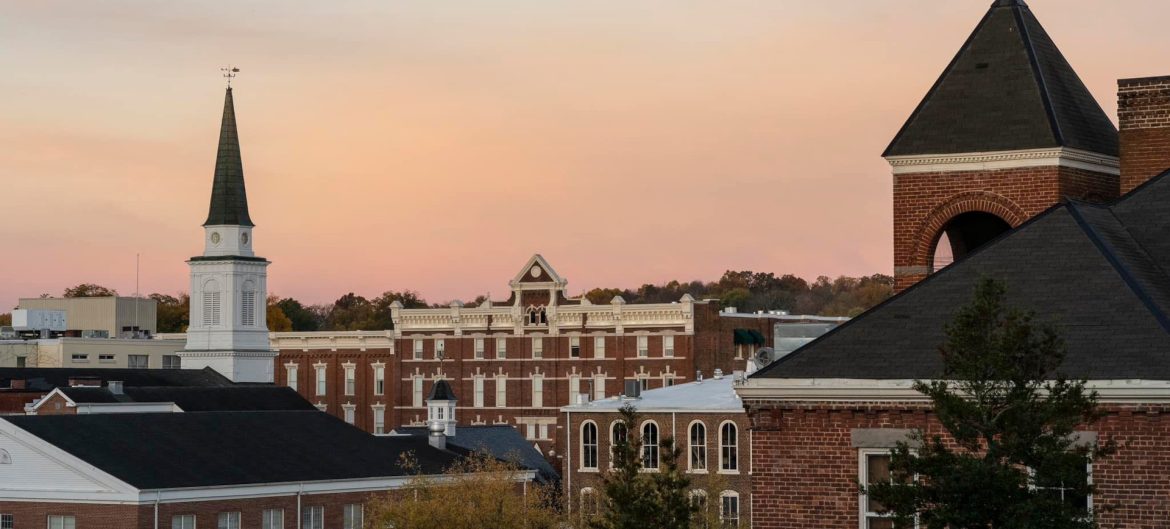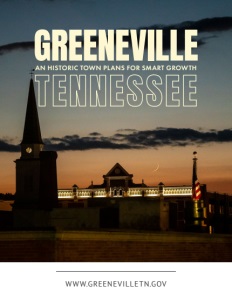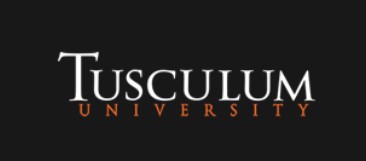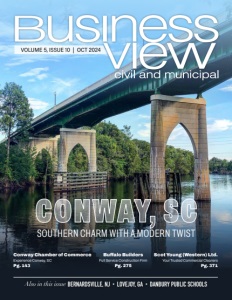Greenville, Tennessee
An historic town plans for smart growth
Creating a virtuous cycle of progress
Boasting a growing population of 15,600, Greeneville is a thriving town with a diversified economy, three industrial parks, hundreds of businesses, and a robust tourism industry based largely on its proximity to the Smoky Mountains and its historically significant places and buildings. And, according to Greene County Mayor, Kevin Morrison, it is also: “idyllic, iconic, small-town, red, white, and blue, mom, apple pie, Chevrolet, hot dog America. It’s a great place to live, work, and play. And we place a great premium on the quality of life for our residents.”
Indeed, Greeneville has much to offer considering that it is still, essentially, both small and rural. It boasts two institutes of higher learning: Walters State Community College and Tusculum University; a post-secondary technical college, the Tennessee College of Applied Technology; one top hospital: Greeneville Community Hospital, two major performing arts venues: the Capitol Theatre and the Niswonger Performing Arts Center; vibrant, retail shopping; as well as museums, parks, historic homes and churches, quaint inns, public golf courses, restaurants, and, of course, the Andrew Johnson National Historic Site.
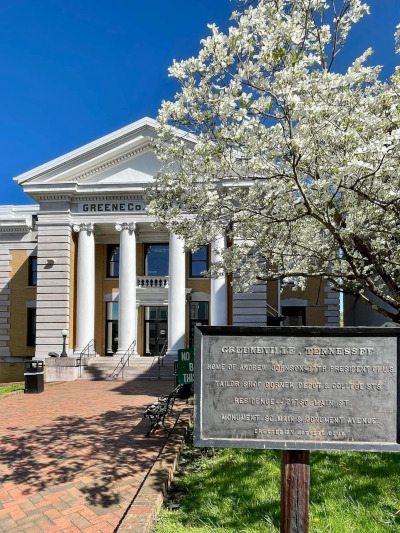
A changing economy
For many years, tobacco was one of Greeneville’s main sources of jobs and revenue, but its decline as a major player in the local economy began in earnest in the early 2000s, when the federal government ended price support for its cultivation. From 1947 to 2005, Magnavox, an electronics manufacturer best known for its television sets, operated its three main facilities in Greeneville, employing some 5,000 workers. The company was bought by its competitor, Dutch-based Philips, in 1974, which then sold it to Five Rivers Electronic Innovations in 1997, which shut down operations permanently in 2005.
“Tobacco was king here,” recounts Jeff Taylor, President of the Greene County Partnership, an umbrella organization formed in 1993 that houses the area Chamber of Commerce, Economic Development, Tourism, Keep Greene Beautiful, and Education & Workforce Development programs. “Magnavox, Philips — we lost 4,500 jobs. R.J. Reynolds disappeared too,” he adds. “That’s when we changed our strategy. Our sweet spot now is that 100-500 employers. Because if something goes bump there, you can rebound; 4,500 sends you to your knees and you might now get up. So, we like base hits and we keep scoring runs with them.”
Over the past 15 years, the Partnership has helped locate 20 manufacturing and distribution firms in Greene County. And the hits have kept coming. “We just announced a $15 million capital investment with John Deere that brings 25 jobs,” Taylor reveals. “We’ve had another expansion at Titan Packaging adding another 50 jobs; that’s an $8 million investment there. We have a Walmart Distribution Center; they’re growing. (It currently employs over 900.) They have had a significant technology upgrade, adding several more high-paying jobs. We got a new company coming, I can’t name yet, bringing a hundred jobs. On top of that, we just recently took possession of 336 acres for industrial development, plus we’ve got another 50 acres.”
Two legacy companies in Greene County are the American Greetings Corporation, the world’s second largest producer of greeting cards with 540 jobs; and Jarden Zinc Products in the city of Tusculum. Now known as ARTAZN LLC, the company began in 1880 making zinc lids for Ball Mason jars. Today, it is the sole supplier of zinc penny blanks for the United States mint, as well as those of more than 20 countries around the world, employing over 300 workers. “We have a very diverse manufacturing base here,” Taylor states, “from currency, to automotive to gift wrap, to John Deere lawn tractors, to logistics, to bottled water. And we continue to grow it.”
Greeneville begins a virtuous cycle
Several years ago, Greeneville decided to spend time, money, and energy developing its downtown core as a way to attract those new businesses and grow the older ones, while providing housing and amenities for the new residents who will both work for and patronize them. “I’ve always considered downtown the soul of your city,” says City Manager, Todd Smith.
“Ours was a beautiful, historic downtown with a lot of great buildings. In the 1960s and ‘70s, the town leaders at the time did not go for that type of urban renewal that a lot of cities went through where they took down historic buildings and put up ugly concrete façades. We didn’t do that. So, we had the benefit of these great historic homes downtown, but not a lot of activity. Part of that was because we didn’t have the infrastructure capacity there. So, as part of our strategic plan, our community and our leadership said that we needed to make some investments downtown – those invisible, underground investments, like water, and sewer, and power, and natural gas, as well as visible ones like street topping, and sidewalks, and landscaping,” Taylor describes.
“We can’t expect the private sector to invest in our downtown, if the public sector is not going to. So, we created a master plan, and about six years ago, we started the process of trying to deliver on the concept. We hired an engineering firm, put design documents together, and had several public meetings on what downtown should look and feel like. And we were ready to go to bid and then COVID hit in 2020.”
“We put things on hold for almost a year, and got to the point where we said, ‘let’s put this project back on the front burner,’” Smith continues. “We bid out the project and it was completed at the end of last year. So, today, we’ve got new streets, new sidewalks, and a block of Depot Street from Main to Irish Streets with a decorative street top, landscaping, historic light poles, and a table top in the middle of the street. We designed this block for more than just flowing traffic and pedestrians. We designed it as a special event space.”
Since that time, several downtown ventures have sprung up. “A property owner bought a building and subdivided it into a pottery studio; there’s a wine-tasting gathering place in one of the facilities,” Smith adds. “We’ve been working with a couple who started an outdoor beer garden on Depot St. We’ve got a local developer who’s currently constructing a nine-unit condominium with street level retail. It’s the first new construction on Depot St. in over a hundred years. So, we’ve got new buildings going up amidst our historic buildings, and that private investment is coming as we hoped for.”
“Since that street has been completed, I’ve spent an exorbitant amount of time sending comps and showing buildings,” Taylor shares. “We invested $11 million downtown since 2021 and we’ve already had almost $9 million of private investment. And that’s just in three years. And that doesn’t include the new building going up. We had a historic gas station turned into a hardware store. And another investor purchased it and turned it into a tap room. It’s a gathering place for a mix of generations. It encourages socializing and it has taken off. There’s a cool, hip, GenZ haircut place doing 500 heads a month. And that foot traffic is pushing over into the retail space. So, what that is saying is: ‘build it and they will come.’”
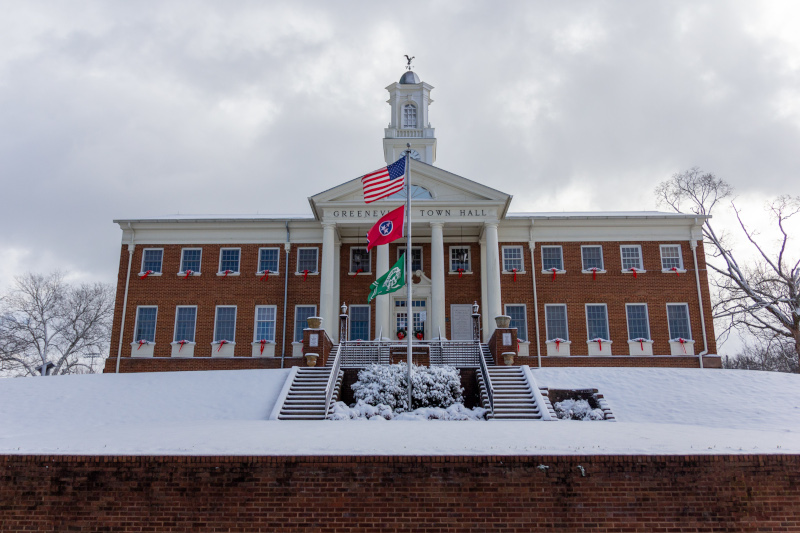
Housing for all
According to Smith, another aspect of that virtuous cycle in Greeneville is downtown’s growing concentration of residential units. “Across the street from that project I mentioned are additional units that have just been completed this past year. And when residents move there, they’re going to demand other services,” he explains. “So, the business market will compensate. You’ll see more restaurants, taprooms, and small stores. I’m very bullish on our downtown because of the residential projects going on there.”
Meanwhile, Taylor reports that a 384-unit residential subdivision is also being developed for those who want more traditional housing that isn’t downtown. “We’ve got every form of housing,” he notes. “Whether you’re a retiree looking to downsize, a young family, a single person; we’re seeing mixed-use, we’re seeing condos, we’re seeing single-family. And it includes workforce housing. That’s been driving some of our housing demands, as well. We sit equidistant from three commercial airports plus our municipal airport, so we recognize from a workforce development viewpoint, we’ve got these careers here. And those are high-paying jobs.”
Training youth for the area’s economy
In fact, Greeneville has been a leader in aviation education for a long time. It was the 11th school system in the U.S. to have CTE (Career & Technical Education) for aviation at the high-school and post secondary levels. Regarding other types of career training for its young residents, Morrison talks about the town’s growing emphasis on the skilled trades.
“It was always sort of a focus on a four-year university degree, with an emphasis on credits and graduation. It discouraged high school students from leaving their campus and coming to the technology center to enjoy the 14 programs we had there.”
“A couple of years ago, we moved those programs back to the campus, where a student can leave the classroom in one period, go over to the career training lab and do some type of electrical, carpentry, plumbing, auto body repair, robotics, automation, small appliance repair, and in the next period go back to class in just a short walk. We tried that on a trial basis. In the first semester, they tripled the number of students that were coming into those types of career fields. So, now we’re more focused on that type of education and helping students identify their passion for what they want to do in the future.”
The promise of broadband
Yet another aspect of Greeneville’s virtuous cycle is the coming introduction of broadband fiber. “Our power company is the Greeneville Energy Authority,” says Smith.
“They recently transitioned their corporate structure to allow them to get into the fiber business, and they’re employing fiber throughout the town of Greeneville with the ultimate goal of providing fiber throughout Greene County, which, if you look at the size of our county, is a big undertaking. And that’s become very critical for us. If you’ve got a job where you can work via a fiber network, Greeneville becomes very attractive because we do have a strong school system, we do have low taxes, we do have short commute times, and we do have wonderful outdoor opportunities. That’s some of the growth we’ve seen over the last few years – folks tapping into the fiber economy. And we’re the best place to do it.”
Confronting the challenges of growth
Smith admits that Greeneville’s growth is not without issues. A growing population means more traffic, a strain on public services, and the need for more and better infrastructure. “Our growth comes with challenges,” he muses. “We’re progressing into a ‘grown-up’ town. But how do we keep Greeneville, Greeneville? How do we keep those aspects of our community that are attractive?”
Morrison, too, is cognizant of the challenges that come with growth. “We want to manage growth, but also look to the future as we evolve as a community,” he states.
“We’ve got a lot of spinning plates that we want to see come to successful fruition. We want to put our best foot forward, but not stumble in our rush to see more of what we’ve started, like continuing the phases of our downtown revitalization because that injected a great deal of enthusiasm into the community. But in order to make a diamond, it takes time and pressure. We want to keep the pressure on, but take the time that we need to produce the gem that lies at the end of the path.”
AT A GLANCE
Greenville, Tennessee
WHAT: A town of 15,000
WHERE: Greene County, in the foothills of the Appalachian Mountains
WEBSITE: www.greenevilletn.gov
PREFERRED VENDORS
Greeneville Community Hospital – balladhealth.org
Greeneville Community Hospital is a 140-bed acute inpatient facility that provides a 24/7 emergency department, intensive care unit, cardiology services, family birth center, robotic surgery and a wide range of diagnostic imaging services. As a member of Ballad Health, Greeneville Community Hospital is part of regional healthcare system.
